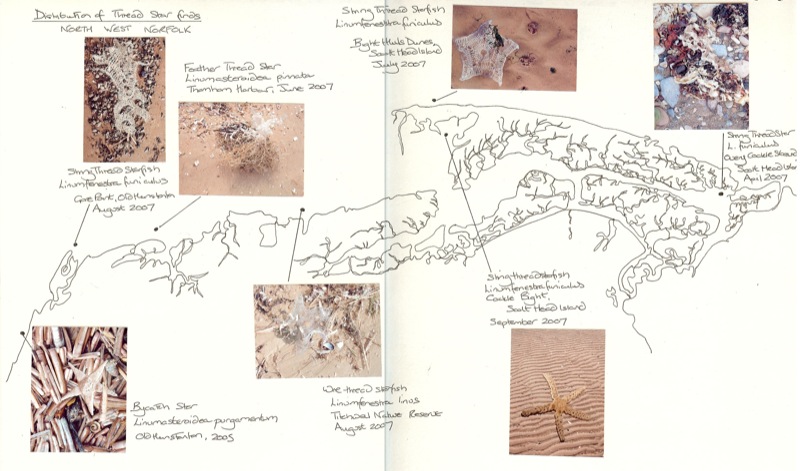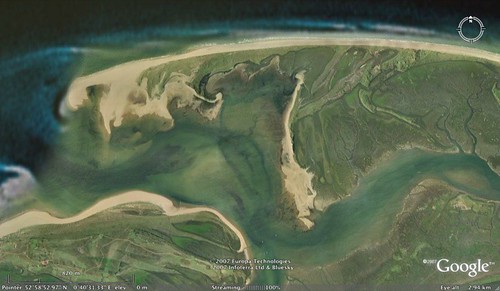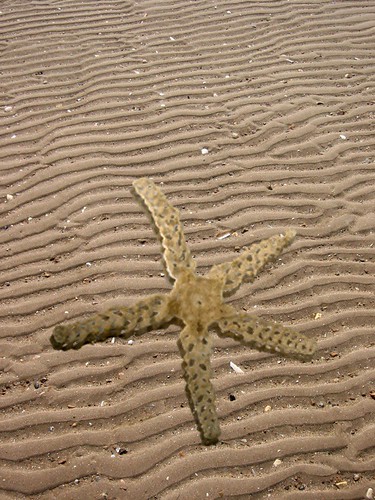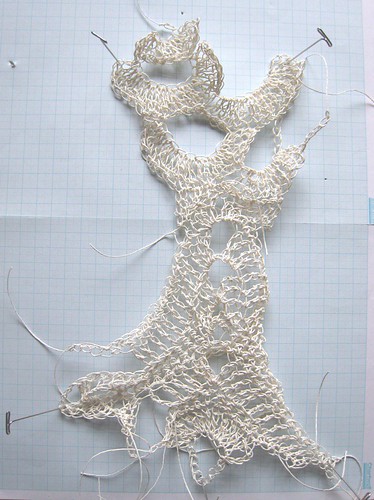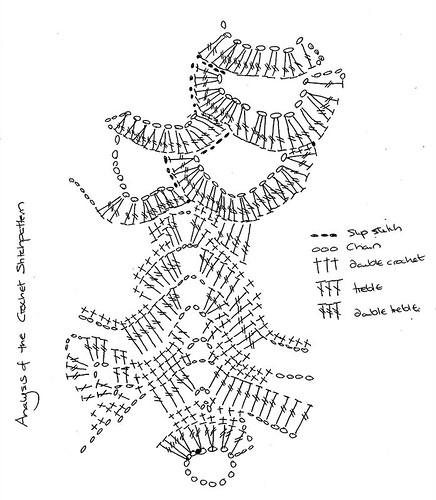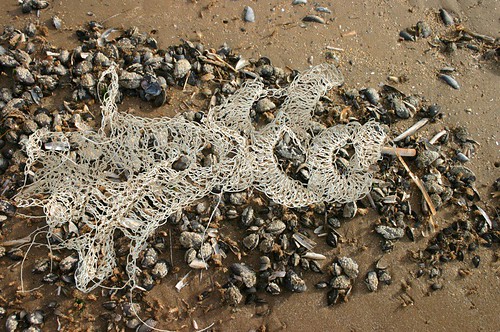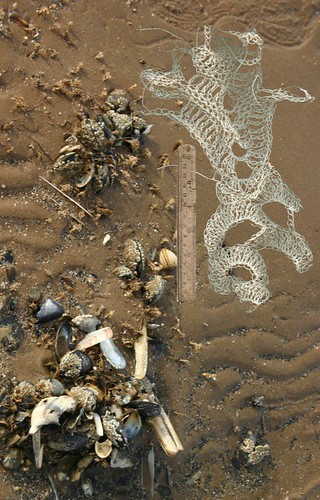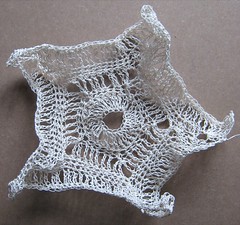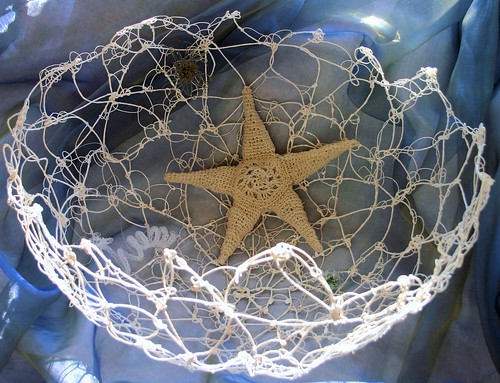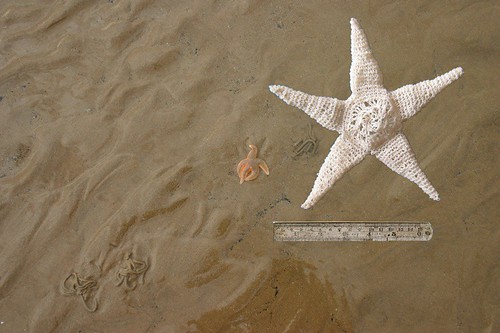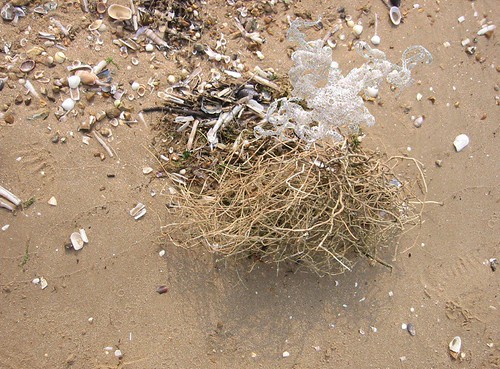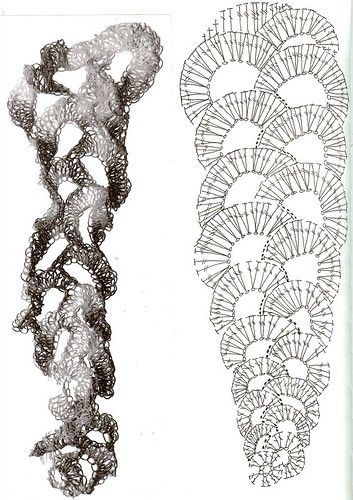2007
Distribution of Thread Starfish Finds
11 September 2007 23:28
The Big Discovery - 7th September, 2007
08 September 2007 23:26
 Oral (lower) surface
Oral (lower) surface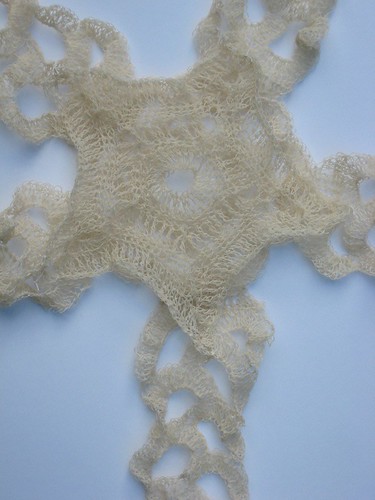
Aboral (upper) surface
A large, complete starfish has been discovered on the sands of Cockle Bight, just off Scolt Head Island. It matches perfectly the partial specimens recovered previously and can be confirmed as a new species, which I have tentatively named linumfenestra funiculus, the string thread starfish. Measuring 90cm in diameter, it confirms the speculation of a giant species of starfish living off coastal Norfolk.
Wire Thread Starfish - 31st August 2007
31 August 2007 23:25
The Missing Link - 11th August 2007
11 August 2007 23:22
Another fragment of a large thread starfish has been washed up at low tide on Old Hunstanton beach, 10km west of Scolt Head. This is an exciting discovery - although only part of the disc and arm remain, they are enough to suggest that the large disc and arm found earlier are linked, maybe even the same species.
The Second Discovery - 21st July 2007
21 July 2007 23:21
Display of the Bycatch Star
01 June 2007 23:04
Taxonomy of Thread Stars - Linumasteroidea
07 May 2007 23:02
Phylum: Echinodermata - Spiny skinned animals: sea urchins, starfish and their allies
Class: Echinozoa - Sea Cucumbers
Class: Crinoidea - Sea Lilies and Feather Stars
Class: Asterozoa - Sea Stars
Class: Linumasteroideae - Thread Starfish
Family: Linumharpago - Hooked Thread Starfish
Genus: Linumpinnatus
Linumpinnatus funiculus - Feather String Starfish
Genus: Linumasteroida
Linumasteroida purgamentum - Bycatch Starfish
Genus: Linumtexturus
Linumasteroida texturus - Textured Starfish
Genus: Linumfenestra
Linumfenestra linus - Wire Thread Starfish
Linumfenestra funiculus - String Thread Starfish
Thread starfish are generally classified according to the structure of their stitch and their fibre construction.
Class: Echinozoa - Sea Cucumbers
Class: Crinoidea - Sea Lilies and Feather Stars
Class: Asterozoa - Sea Stars
Class: Linumasteroideae - Thread Starfish
Family: Linumharpago - Hooked Thread Starfish
Genus: Linumpinnatus
Linumpinnatus funiculus - Feather String Starfish
Genus: Linumasteroida
Linumasteroida purgamentum - Bycatch Starfish
Genus: Linumtexturus
Linumasteroida texturus - Textured Starfish
Genus: Linumfenestra
Linumfenestra linus - Wire Thread Starfish
Linumfenestra funiculus - String Thread Starfish
Thread starfish are generally classified according to the structure of their stitch and their fibre construction.
Thread Stars in Norfolk
01 May 2007 23:00
First Examination
27 April 2007 22:25
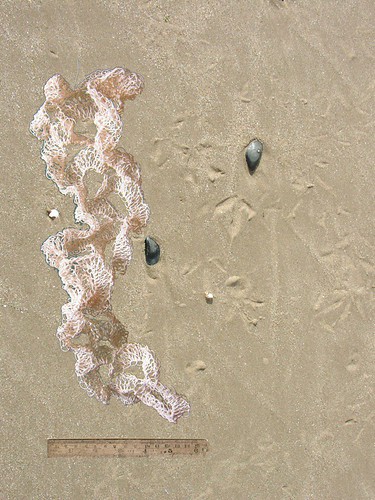
I laid what seems to be the skeletonised limb of a very large starfish out on a nearby patch of sand, to make a cursory analysis. It appears to be a thread starfish, of a type unknown to me.
Field sketch of the starfish
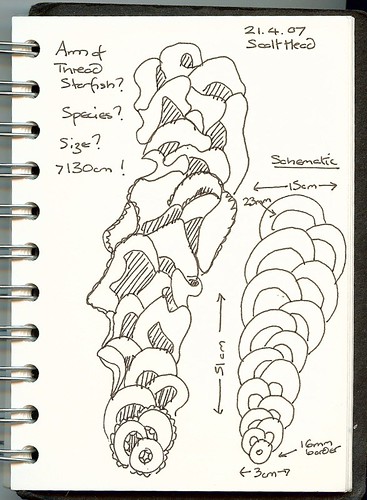
Measurements:-
51cm in length
Tapers in width from 15cm to 3cm
Appearance:-
The tip is a circle with a 16mm looped border
Progressively wider semi-circles along the length, with a 16mm looped border increasing to 23mm
The skeleton appears to be made from a fine coarse white fibre
Further analysis of the thread and structure will need to be carried out in the lab.
The Discovery - 21st April 2007
27 April 2007 22:20
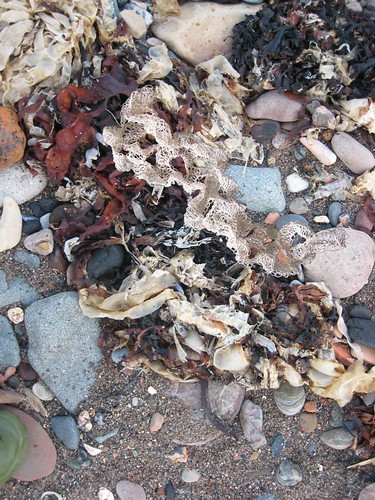
Today, I have made an exceptional discovery in a pile of sea weed and other detritus dragged high up the beach by the fierce tide. At first glance, it appeared to be just another dumped plastic bag, but closer exmination revealed something far more exciting - a patterned structure that seems to be made out of stitches and thread. Could this be part of the famed starfish that I've been searching for?
The Rumour
03 January 2007 12:00
Unconfirmed reports talk of a giant starfish washed up during last year's spring leap tide somewhere along the shore of Scolt Head Island, the much studied sand spit on the North Norfolk Coast. The specimen has since disappeared, probably into the hands of a collector, but stories abound of the discovery of an intact starfish more than a metre and a half in diameter. Unlikely though it seems, this huge starfish may also be a member of the extremely localised Linumasteroidea species. So far, an appeal in the Eastern Daily Press to make the specimen available for scientific study has failed to reveal any traces of the specimen or further information about where it was found.
I have walked the length of the island whenever possible studying the tideline, a distance of some 6km, and always after the particularly high leap tides. I frequently find the more common species of starfish washed up, although what is now considered common in these days of turbulent changes in climate and the tropical sea conditions we now find off Norfolk, would have definitely been considered exotic until recently. The warmer, clearer waters and abundance of food on the newly formed coral reefs just offshore have certainly contributed to an increase in size in the starfish found and a 20 cm starfish is no longer a rarity, but a starfish this large seems an impossibility.
I have walked the length of the island whenever possible studying the tideline, a distance of some 6km, and always after the particularly high leap tides. I frequently find the more common species of starfish washed up, although what is now considered common in these days of turbulent changes in climate and the tropical sea conditions we now find off Norfolk, would have definitely been considered exotic until recently. The warmer, clearer waters and abundance of food on the newly formed coral reefs just offshore have certainly contributed to an increase in size in the starfish found and a 20 cm starfish is no longer a rarity, but a starfish this large seems an impossibility.

